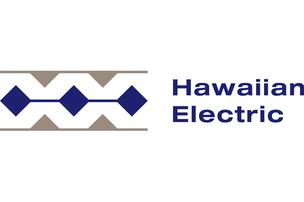By Staff Reports
(Honolulu) – With significant rainfall and thunderstorms expected from Hurricane Ignacio, the Hawaiian Electric Companies have activated our emergency response plans and have been making preparations to quickly respond to customer outages and other potential impacts to our systems. Some of the activities include:
- Resource planning for all aspects of emergency response, including field crews, power generation, customer service, logistics, communications and more.
- Arranging for additional resources, if needed, including contractors and equipment.
- Ensuring fuel supplies for trucks and other equipment are topped off.
- Making plans to mobilize field crews and equipment to be staged in locations where they can respond as quickly as possible.
How we prepare for storm season
- Each year, we conduct extensive training and drills to prepare our employees to respond safely and as quickly as possible to storms and other emergencies.
- We work closely with federal, state, and county emergency response agencies to coordinate preparations.
- We also prepare and strengthen our infrastructure throughout the year by:
- Doing ongoing vegetation management
- Inspecting and upgrading poles, power lines, transformers, and other equipment
- Conducting ongoing maintenance of generating units
Electrical preparedness and safety
Safety is always our top priority. We urge our customers to consider these emergency electrical preparedness steps and to follow the electrical safety advice below:
- Check emergency equipment, such as flashlights, emergency generators, battery-operated (hand-crank or solar) radios, light sticks, and lanterns, and buy extra batteries. Do not use candles.
- If someone in your home depends on an electrically powered life support system and you don’t have a backup generator, make plans in advance to go to a safe location where electricity will be available. Some shelters are designed for people with health needs—just remember to take your own medical equipment and medications.
- Turn your refrigerator/freezer to the coldest setting; in the event of a power outage, food will keep fresh longer.
- Stock an ice chest with ice or frozen ice packs.
- Store matches or a lighter in a waterproof container.
- For cooking, purchase butane, propane, or a canned heat stove and enough fuel for seven days, or a charcoal grill and charcoal. Do not use these units indoors.
- Properly secure propane tanks in a cool, dry, and well-ventilated storage area.
- Before a storm hits or if there is a power outage, unplug all unnecessary electric equipment and appliances until the storm has passed or until power is restored.
- Stay away from downed power lines. Assume they are energized and dangerous. If you see a downed power line or someone injured after touching a downed power line, call 9-1-1 for help.
- Should you need to evacuate, take emergency supplies and remember to shut off electricity at the main breaker or switch.
- When using a portable generator, carefully read and follow instructions in the manufacturer’s manual. Do not plug the generator into your household electrical outlets.
- If you have a rooftop photovoltaic system, consult with your licensed solar contractor regarding normal and emergency operation procedures for your solar system. As a safety precaution, most photovoltaic systems are designed to safely shut down during outages. PV systems typically have monitoring systems which allow owners to check on the status of their system.
- If you become trapped in an elevator during a power outage, relax and stay calm until help arrives. Use elevator emergency communication systems to report where you are and who is with you. Do not try to force open elevator doors. Never try to exit a stalled elevator car. Always wait for trained and qualified emergency personnel.
The Hawaiian Electric Companies’ free “Information Handbook for Emergency Preparedness” includes these tips and more. It can be downloaded at http://hawaiianelectric.com/prepare.
The handbook includes key numbers to have on hand, checklists for emergency supplies (such as a home survival kit and first aid kit), electrical safety information, power outage preparedness and recovery information, and household and food safety tips. It also provides references and links to related resources, such as the American Red Cross, Federal Emergency Management Agency (FEMA) and civil defense agencies.

